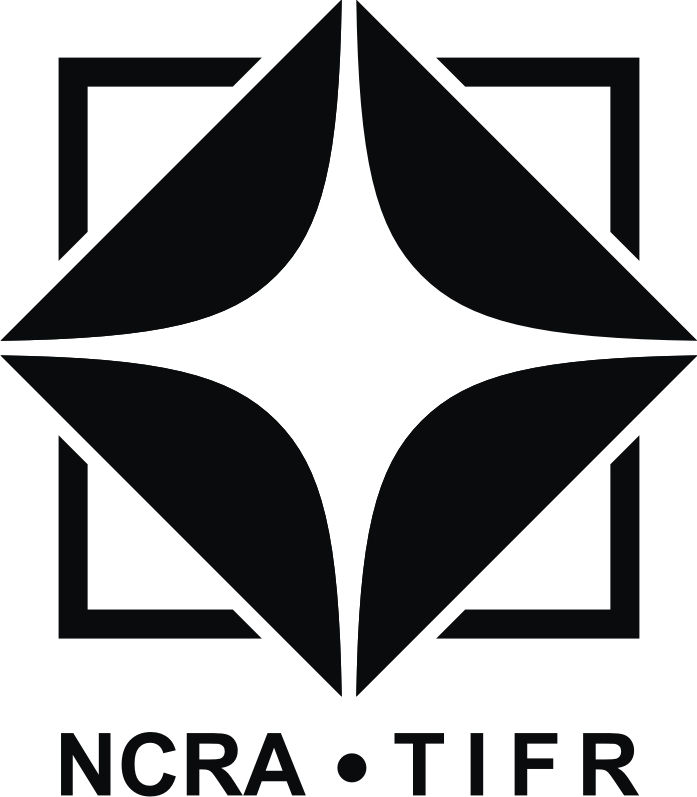NATIONAL CENTRE FOR RADIO ASTROPHYSICS, PUNE
2017 PHISCC Workshop : Exploring First Light
February 6 -11, 2017
NATIONAL CENTRE FOR RADIO ASTROPHYSICS, PUNE
2017 PHISCC Workshop : Exploring First Light
February 6 -11, 2017
Led by Tobias Westmeier and Thijs van der Hulst
: tobias.westmeier@uwa.edu.au
The SoFiA team proposes to organise a two-day SoFiA workshop following the PHISCC-2017 meeting. The workshop will first familiarize the attendants with SoFiA, help them install it on their laptops if they have not done this before coming (the preferred mode) and then guide them through the various options in SoFiA.
In addition we would like the attendants to bring their own data. This serves two purposes. It directly gives the workshop participants results that they can use for their research. Secondly, it provides the SoFiA developers with feedback about the variety of data for which SoFiA is used and, more particularly, the practical problems people encounter when running SoFiA on data from different telescopes (JVLA, ATCA, WSRT, GMRT, Arecibo, Parkes etc.). Ideally, we would like to see a commissioning test cube from both Apertif and ASKAP to see how SoFiA performs on each of those.
We strongly encourage workshop participants to bring their own data and to install SoFiA on their laptops before the meeting. We will be glad to help them in case they have problems.
It would be useful if workshop participants could give us a brief description of the data they are going to bring, what they expect SoFiA to deliver, and how this suits the science goal of their project. This will be implemented as a brief questionnaire, to be circulated later.
Led by Peter Kamphuis
: peter@ncra.tifr.res.in
The WALLABY Kinematics team will organize a 2-day mini-kinematics workshop after the PHISCC 2017 in Pune. We plan to give participants a short overview to briefly motivate scientifically the kinematical modelling of line observations and then to provide a set of hands-on tutorials with different software packages. The exact packages that can be covered would depend on the attendance of the various experts but we aim a wider scope than can be covered by the WALLABY Kinematics team alone. At this point in time tutorials on the classical package rotcur and the 3D fitting software (Tirific/FAT) are already in place. We further aim to have an expert in BAROLO and 2DBAT come and give tutorials.
Besides the tutorials we want to give participants sufficient time to experiment with different software and to try and run the software of their choice on their own data under the guidance of the present experts. It would hence be useful to know whether the participants (a) have experience with tilted ring modelling, (b) have the required software installed, (c) intend to fit what type of data (i.e. several cubes, deep data, etc).
The workshop will be focused on kinematical fitting of HI 21cm data but we also aim to include two discussion sessions. One will focus on the differences between optical line data (obtained with Integral Field Units and Fabry-Perot spectrographs) and radio data. The aim of this discussion would be to get a better understanding of what the communities can learn from each other as well as to see if a standard framework, in which parameters from different observations can be compared directly, is required. For this we are currently gauging interest with the author of the GPU IFU Fitting code GBKFit to give a tutorial on the said software and to participate in this discussion.
The second discussion will be on how to compare the different codes and their usefulness for batch fitting. For this session we would aim to have experts that cannot attend in person participate in the discussion via video conferencing. The aim of this discussion is to start a collaborative effort among the different teams to set up a database of real and modeled data on which the codes can be tested. The discussion should identify the different parameters that should be tested for (e.g., beam shape, noise, inclination, galaxy size) and the rules of fitting (e.g., fixing inclination).
Led by Marc Verheijen
: verheyen@astro.rug.nl
Under consideration
